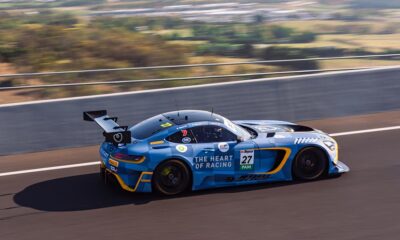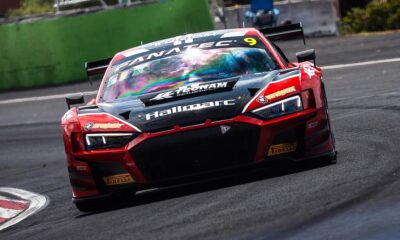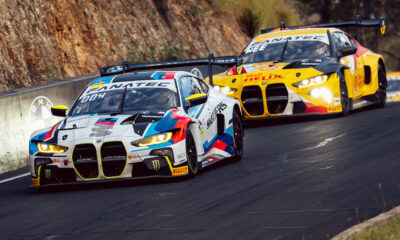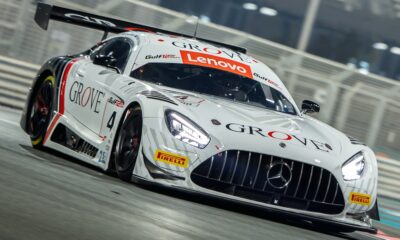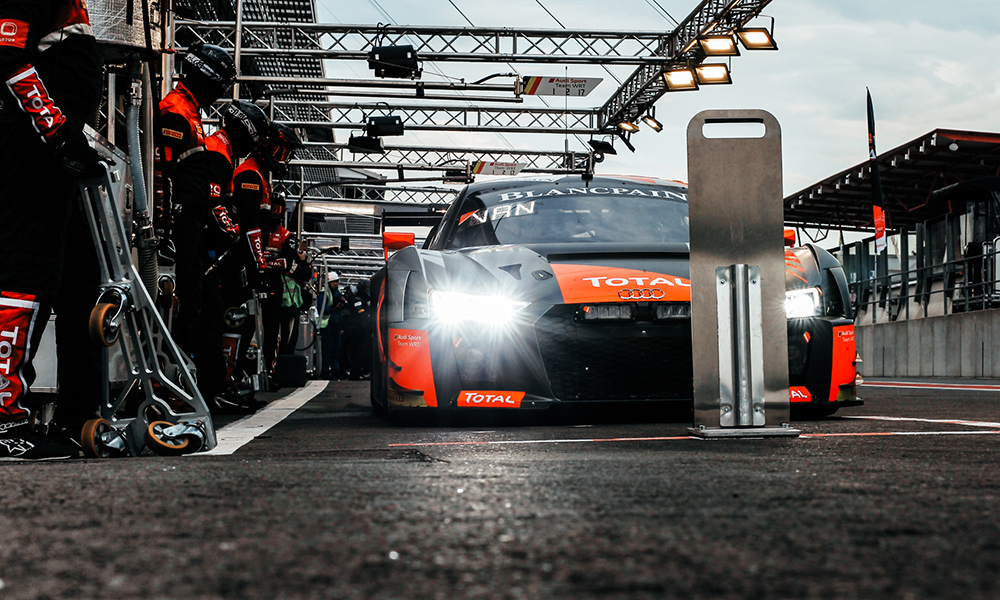
Photo: Patrick Hecq/SRO
The introduction of joker pit stops to the Total 24 Hours of Spa, in an attempt to add a strategic element to the race, has been met by mixed reactions from teams.
While the success of the Blancpain GT Series’ blue riband event remains at an all-time high, critics have pointed toward ever more restrictive sporting rules that limit teams’ strategic freedom.
Maximum stint lengths, technical pitstops and a minimum pitstop time have resulted a in a more-or-less predictable race pattern and teams spending the same amount of time in the pits.
Cars are permitted one joker stop in each six-hour segment of the race, with refueling allowed and no minimum time limit.
All other refueling stops are subject to a minimum time of 110 seconds, while any other stops without refueling are unrestricted.
The concept, which was introduced at Paul Ricard, saw Bentley Team M-Sport gain track position early on and quickly recover from a suboptimal qualifying result.
However, questions remains whether the jokers will have the desired effect under normal race conditions, as teams are now allowed to refuel and change tires simultaneously and effectively eliminating the advantage of double stinting tires.
“The joker pitstops don’t add a lot to the race,” Black Falcon engineer Renaud Dufour told Sportscar365.
“There are a lot of rules now, first we got the maximum stint time, then the minimum pitstop time and now we can refuel and change the tires at the same time.
“They try to break it open again with the jokers, but it doesn’t really make a big difference. To be honest, I think the race will be even less strategic than last year.
“It will give a small advantage to the cars with a better refueling restrictor, they will be able to fill up their tank a couple of seconds quicker.
“You can only get a decent advantage in certain specific situations, like topping up fuel during a safety car.”
WRT’s Thierry Tassin gave another situation in which a joker stop could useful.
“They give you the option the react quicker to changing weather conditions,” he said. “For example, you can come in to put on wets and just top up fuel during the middle of a stint.”
The time to be gained compared to normal timed stops, however, is expected to be minimal, as teams have been struggling to complete full service under the 110-second minimum.
Gottfried Grasser echoed Dufour’s thoughts, saying that “it doesn’t bring a lot here at this race.”
“SRO had the refueling times in mind, but there’s still a couple of cars that are able to refuel faster,” he told Sportscar365. “When we do a perfect full pitstop, fueling for an entire stint we can gain maybe two seconds with a joker.
“Cars with faster refueling have a small advantage, but besides that it could only make a difference at the end of the race.
“For us we can use the joker in the last six hours; it gives a chance to extend the 65-minute stints by short fueling”



















